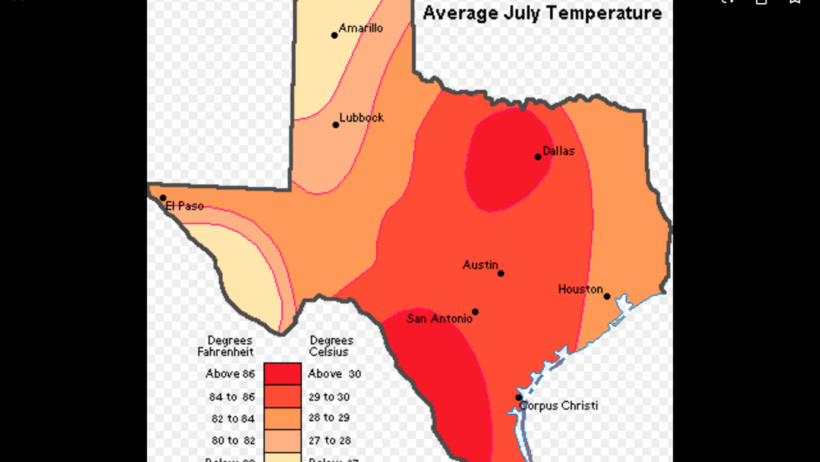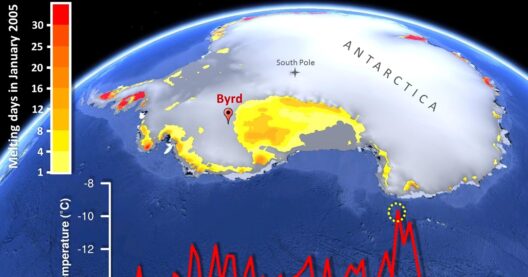Texas, the second-largest state in the United States, exhibits a remarkable and diverse climate that reflects its expansive geography and varying topography. From the arid deserts of the west to the humid coastal plains of the east, the climate of Texas is emblematic of the broader climatic phenomena influencing the Southern United States. This article elucidates the myriad climatic zones of Texas, emphasizing the distinct characteristics and implications of each region.
Firstly, it is crucial to grasp the overall climatic classification of Texas. The state is primarily characterized by a semi-arid climate with some areas experiencing a humid subtropical climate. The Panhandle region is classified as having a continental climate, while the Gulf Coast regions fall under a humid subtropical climate classification. This variation arises largely due to the state’s vast size and geographical features, including mountains, plains, and coastlines.
The westernmost part of Texas, commonly referred to as Trans-Pecos, presents a unique climatic scenario. This region is predominantly arid, characterized by minimal precipitation and significant temperature fluctuations. Annual rainfall averages are considerably low, often less than 12 inches, which results in a landscape dominated by desert vegetation such as cacti and scrub. The nights can be exceptionally cool, contrasting sharply with the scorching daytime heat, a phenomenon known as diurnal temperature variation. The Chihuahuan Desert largely influences this climate, contributing to the aridity and the biodiversity of uniquely adapted fauna and flora.
Transitioning eastward, one encounters the plains of Central Texas, which evolve into a more humid climate. This region benefits from an increased amount of rainfall, averaging between 20 to 30 inches annually. The climate is influenced by warm, moist air masses from the Gulf of Mexico, which interact with cooler fronts moving in from the west. Consequently, Central Texas experiences not only mild winters but also sweltering summers, with temperatures frequently soaring above 100 degrees Fahrenheit during the peak months. The rich precipitation patterns support lush vegetation and a thriving agricultural economy, particularly in crops like cotton and corn.
The coastal region of Texas is indubitably one of the most prominent areas in terms of humidity. The Gulf of Mexico plays a substantial role in shaping this segment’s climate. The humidity levels are consistently high, often exceeding 70% throughout the year, resulting in muggy conditions and a propensity for tropical storms and hurricanes during the Atlantic hurricane season. Rainfall is abundant, with annual averages reaching up to 50 inches, contributing to the rich biodiversity found in coastal ecosystems, including wetlands, marshlands, and estuaries. Coastal cities like Galveston and Corpus Christi often experience torrential rains and storm surges, significantly impacting local economies and environments.
Despite the diversity in climatic conditions, Texas is united by certain climatic extremes. Drought is a recurring theme across several regions, particularly during prolonged periods of limited rainfall. The cyclical nature of drought and excessive rainfall can lead to challenges for farmers, local ecosystems, and water resources management. Compounding these issues, climate change is expected to exacerbate these extremes, presenting significant challenges for Texas agriculture, water supply, and natural habitats.
Another critical factor influencing Texas’s climate is its susceptibility to severe weather events. Tornadoes, often referred to as the “Tornado Alley,” are common in the northern parts of the state, particularly during the spring months. The unique geography of Texas—including its flat plains—facilitates the formation of these violent storms. Furthermore, Texas is also prone to thunderstorms and hail, which can cause considerable damage to property, infrastructure, and crops.
The climate of Texas significantly affects the distribution of natural resources and biodiversity. The varied climatic zones give rise to distinct ecological regions, each supporting different species of wildlife and plant life. In the arid west, for instance, hardy drought-resistant species thrive, while the lush, humid east supports a plethora of deciduous trees and a rich diversity of marine and aquatic species. The adaptability of these ecosystems is a testament to natural resilience; however, they are increasingly vulnerable to anthropogenic pressures, including urban development and pollution.
In light of these climatic characteristics and challenges, it is imperative to pursue sustainable practices that mitigate environmental impacts. Conservation efforts should focus on preserving the unique ecosystems found across Texas, promoting practices that enhance water conservation, and fostering community awareness about climate change and its impacts. Collaborations between government, local communities, and environmental organizations can foster resilience against the adverse effects of climate variability.
In conclusion, understanding the climate of Texas provides pivotal insights into the complex interplay between geography, weather, and ecology. From the arid landscapes of the west to the humid realms of the east, Texas exemplifies a wide-ranging climate tapestry. Navigating the challenges posed by natural variability and climate change necessitates an informed and proactive approach to ensure the sustainability of Texas’ natural resources and the well-being of its inhabitants.








